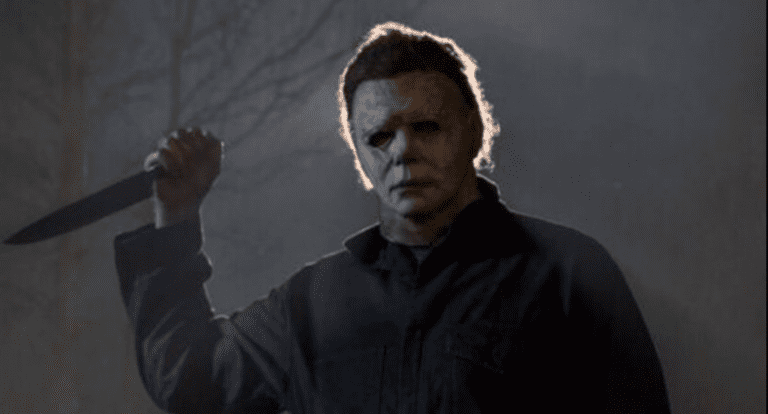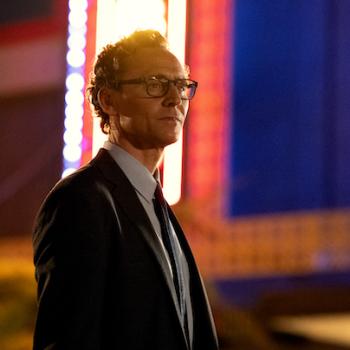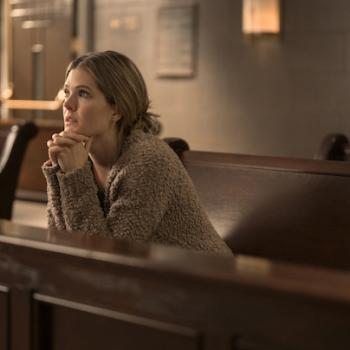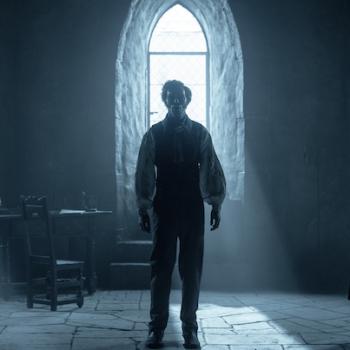
Michael Myers is a big jerk.
We’ve known that for a while, of course. The Halloween franchise’s big, bad boogeyman has been terrorizing the teens of Haddonfield, Illinois, for 40 years now. And while the latest sequel (out this very day) conveniently ignores every Halloween film but the 1978 original, Michael’s personal kill count still easily climbs into the double digits.
Yes, Michael Myers is indeed a terrible human being. Or is he? Might he be … something else?
After seeing the newest (and quite effective) Halloween film, I have my doubts he’s all just flesh and blood and some serious mental problems. I think America’s most durable slasher villain may be more spiritual, and more infernal, than some might think. And it goes beyond Michael’s ability to shrug off bullet wounds like bee stings.
Michael started out human enough. We know that, at age 6, he killed his sister, and demons who crawl up directly from the pit of hell don’t typically have human siblings.
But even back then, the franchise suggests that something else was at work. Michael’s old psychologist, Dr. Loomis said that the child had “the blackest eyes, the devil’s eyes.”
“What was living behind that boy’s eyes was purely and simply … evil,” Loomis said in 1978. And, as the new Halloween clearly and grotesquely illustrates, 40 years of treatment haven’t helped.
Laurie Strode (Jamie Lee Curtis) was Michael’s primary quarry in 1978. In the new movie, she’s still dealing with the pain and terror of that night. When a pair of podcast journalists come to visit, telling her that they’d like to understand Michael better—to learn what lessons he might have to teach—Laurie’s quick to set them straight.
“There’s nothing to learn,” she says. “There are no insights or discoveries.”
And yet perhaps we can get a little insight here, even from the name of the movie itself.
In Christian tradition, the demons populate hell for two reasons: One, that’s where God sent them as punishment, and two, to punish the poor unfortunate mortals who don’t get into heaven. (I know, I know, it seems strange to be both prisoner and guard, but let’s roll with it).
But over the centuries, they were said to plague good people, too. Some (or their avatars) roamed the earth and looked for ways to make mischief. They’d attack and even kill the unwary some thought—folks guilty perhaps of nothing more than walking home a little later at night than they should.
And you know the night that evil spirits and demons were supposed to be particularly active? Halloween, of course. The Headless Horseman from Washington Irving’s The Legend of Sleepy Hallow is a particularly memorable example of a Halloween fiend, searching for his lost head and—according to the old wives in Irving’s story—taking people away “by supernatural means.”
Obviously, Michael Myers chooses Halloween to break out of sanitariums more for reasons of the box office than any supernatural inclination. And yet there he is again, on All Hallow’s Eve with his mask and knife, seeming ever-so-much-like a modern, malevolent spirit haunting the streets of Haddonfield. He’s a figure of folklore, separated only from the Headless Horseman by a few centuries and increments of gore.
And like the demons that torment sinners in hell, there’s a tang of retribution in play.
Throughout his own sordid cinematic history, Michael Myers has shown a particular penchant for killing teens engaged in sex or drugs or misbehavior. And even in the newest version, he goes after randy, drug-doing teens and one poor lad who made an unwanted advance on a friend of his. (Would that make Michael part of a #MeBoo movement?)
It’s altogether fitting that Michael Myers wears a mask, which hides his would-be humanity underneath a false skin (itself a leathery mockery of man). That he never speaks, which could make him feel more human (and less frightening). Michael’s nature is meant to be enigmatic—once human and at least still partially so, but … he’s something else as well. Something described as “pure evil,” unalloyed by the complex stew of impulses and motivations that power most of us. Michael’s mask doesn’t just amplify the terror we feel (because the mask is seriously freaky), but it hides the black unknown underneath. Who is this who ignores bullets and stab wounds and fire and two-ton vehicles smashing into him? What really lurks underneath his skins?
In many respects, Michael Myers feels indeed like a boogeyman—and one with some Medieval Christian underpinnings. He represents pure evil, an exactor of punitive punishment and a catalyst for chaotic, meaningless tragedy at once. He is a demon who comes out to play when the barrier between the living and the dead, the good and the damned, is at its thinnest. Without the holiday’s pagan/Christian underpinnings, Halloween wouldn’t be nearly as effective … or as successful.
I don’t want to spoil anything in the latest film, but let me just leave you with a little teaser: If Michael is a demon, the final, climactic scene feels particularly appropriate.













